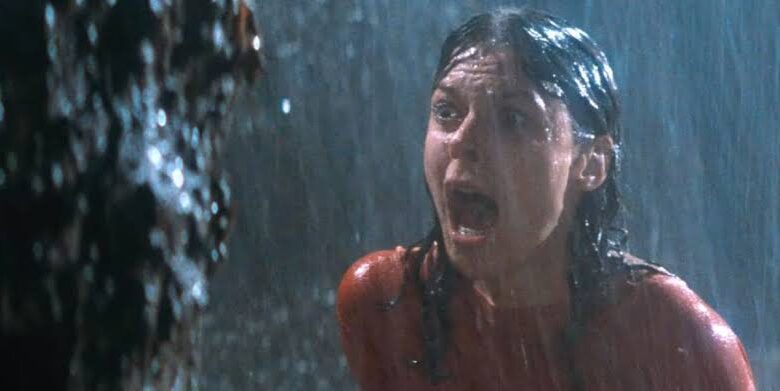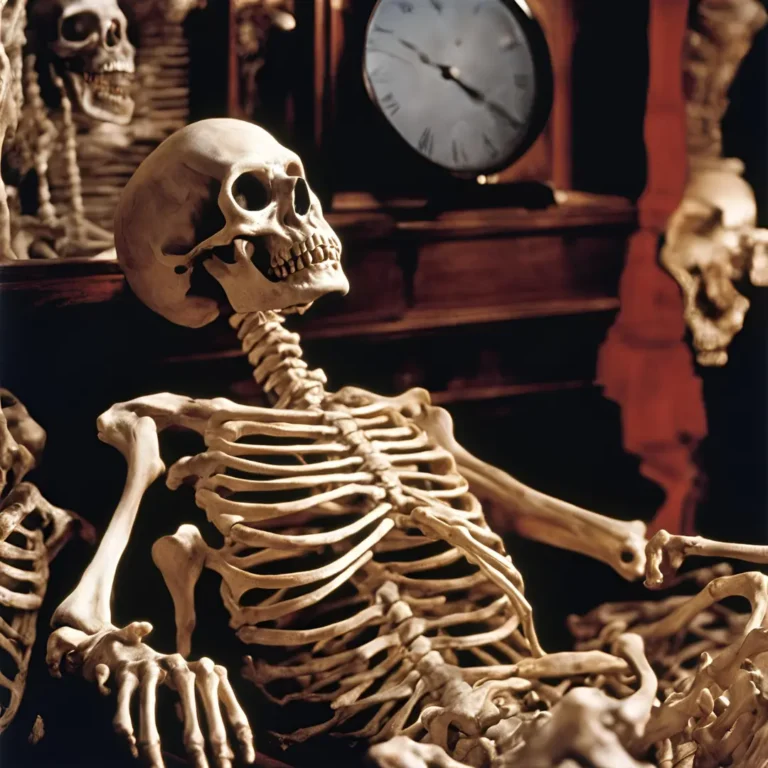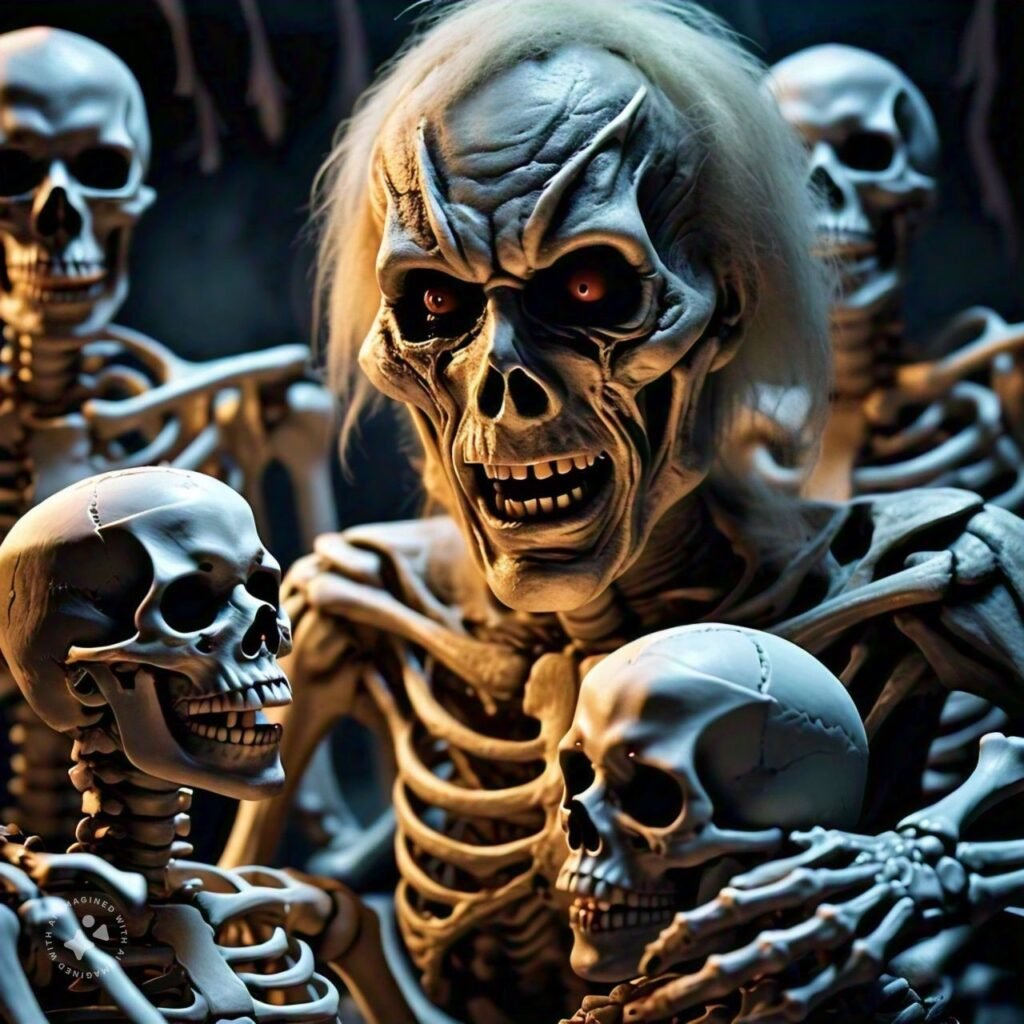Introduction to the Controversy surrounding Poltergeist
The 1982 movie Poltergeist is often regarded as a classic in the horror genre. Its terrifying sequences and haunting storyline have captivated audiences for decades. However, beneath the film’s eerie surface lies a dark tale that has sparked controversy: the alleged use of real human skeletons during production. This sensational claim has led to whispers and theories among fans and critics alike. What really happened on set? Did filmmakers cross an ethical line in their quest for authenticity? Join us as we unravel this spine-chilling mystery surrounding one of cinema’s most iconic fright fests, exploring what’s fact, fiction, and everything in between about “the 1982 movie poltergeist used real skeletons as – tymoff.”
The Allegations of Real Human Skeletons Used in the Film

The 1982 movie Poltergeist sparked significant controversy with allegations that real human skeletons were used during filming. This unsettling claim emerged largely due to the film’s chilling scenes involving graveyard imagery.
People speculated about the authenticity of the skeletal remains seen on-screen. The shocking revelation raised eyebrows, especially when considering the film’s haunting narrative and eerie visual aesthetics.
Filmmakers reportedly faced challenges sourcing props that looked realistic enough for key horror moments. Instead of opting for high-quality replicas, it is said they took a shortcut by using actual human remains.
This decision ignited debates among audiences and critics alike regarding ethics in filmmaking. Many wondered how such choices could be made without proper consideration for respect toward those who have passed away. The chilling allure of Poltergeist only deepened as these rumors circulated, casting shadows over its legacy in cinematic history.
the 1982 movie poltergeist used real skeletons as – tymoff

The 1982 movie *Poltergeist* is notorious for its chilling story and eerie visuals. But the real shocker lies behind the scenes. Rumors have long circulated that real human skeletons were used during filming.
These claims stem from a scene involving a swimming pool filled with skeletons, designed to amplify fear. The production team reportedly opted for genuine remains due to budget constraints and the challenge of creating realistic props.
This controversial choice has sparked outrage over the years. How could filmmakers use actual human bones in a horror film? It raises questions about respect for the deceased and ethical standards in cinema.
Despite these allegations, some cast members maintained that they believed it was all part of an elaborate urban legend. Yet, this revelation has forever altered how audiences perceive both *Poltergeist* and its creators’ intentions regarding artistry versus morality.
The Truth Behind the Claims: Evidence and Testimonies

Numerous claims have emerged regarding the use of real skeletons in “Poltergeist.” The most notable testimony comes from actress JoBeth Williams, who mentioned feeling uneasy during a scene involving skeletal remains.
However, director Tobe Hooper and producer Steven Spielberg denied these allegations, stating that all props were artificial. They insisted no human remains were used in filming.
Despite this reassurance, whispers persisted within the industry. Some crew members hinted at unorthodox practices, fueling speculation around authenticity.
The film’s legacy is intertwined with urban legends. Such rumors became a part of its mystique over time.
Additionally, fans often debated whether certain scenes appeared too realistic to be mere replicas. This debate kept curiosity alive long after the movie’s release.
Impact on the Movie Industry and Audience Perception
The revelation that the 1982 movie Poltergeist used real skeletons sent shockwaves through Hollywood. It challenged industry norms and raised ethical questions about the lengths filmmakers would go to create a compelling narrative.
Audiences were captivated yet disturbed. The idea of using actual human remains transformed how viewers approached horror films, fostering skepticism about authenticity in cinematic storytelling. Some wondered if they could trust what they were seeing on screen.
This controversy sparked discussions around special effects versus reality, influencing future productions to tread carefully regarding their portrayal of death and decay. Filmmakers became more conscious of audience sensitivities, often opting for CGI or props instead of controversial materials.
As a result, it created an atmosphere where transparency was valued over shock value. Many studios reevaluated their practices to maintain integrity while still delivering spine-chilling content that resonated with audiences without crossing moral boundaries.
Ethical Considerations and Legal Ramifications
The use of real human remains in filmmaking raises significant ethical questions. When a production chooses to incorporate actual skeletons, it crosses a line that many consider disrespectful. The deceased deserve dignity and respect, regardless of the context in which their remains are presented.
Legal ramifications also come into play here. Filmmakers must navigate strict laws regarding the treatment of human remains. In some jurisdictions, using authentic skeletons without proper consent can lead to severe penalties.
Moreover, public reaction can create further complications for studios. Outcry against such practices might result in boycotts or tarnished reputations for those involved. These repercussions remind us that every creative decision carries weight beyond mere entertainment value.
As audiences become more aware and sensitive to these issues, filmmakers face mounting pressure to adhere to ethical standards while crafting their narratives.
Other Hollywood Films that Utilized Real Human Remains
Hollywood’s fascination with authenticity sometimes leads filmmakers to make controversial choices. Several notable films have crossed the line, opting for real human remains.
One infamous example is “The Ten Commandments” (1956). The production used actual mummified bodies to enhance scenes depicting ancient Egypt. This decision sparked debates on ethical practices in filmmaking.
Another film that raised eyebrows is “Apocalypse Now” (1979). During its intense shoot, some reports suggest the use of real corpses in certain sequences, adding a surreal layer to an already harrowing narrative.
In more recent years, “The Autopsy of Jane Doe” (2016) also hinted at employing genuine anatomical specimens for realism. While these decisions aim for heightened effects, they tread dangerously close to exploiting death itself.
Each instance leaves audiences questioning: where should we draw the line between art and respect?
Conclusion: Respecting the Dead and Honoring Filmmaking Ethics
The use of human remains in filmmaking raises profound ethical questions. Respect for the deceased should always be a priority, transcending artistic expression or commercial gain.
Filmmakers have a responsibility to approach sensitive topics with care and integrity. Audiences expect transparency and respect behind the scenes, particularly regarding such serious matters.
While creative liberties can enhance storytelling, filmmakers must draw clear lines when it comes to using real human skeletons or remains. The legacy of those who have passed deserves dignity.
As viewers gather around screens, they engage not just with stories but also with the moral implications behind them. It’s essential that every film production reflects an understanding of this delicate balance between creativity and ethics.
Honoring both craft and conscience ensures that cinema continues to inspire without crossing into disreputable territory.
FAQs :the 1982 movie poltergeist used real skeletons as – tymoff
FAQs: the 1982 movie poltergeist used real skeletons as – tymoff
What sparked the controversy around Poltergeist and its use of skeletons?
The controversy began when rumors spread that actual human remains were used in certain scenes. This raised numerous ethical questions about the filmmaking process.
Did director Tobe Hooper confirm these allegations?
While there has been speculation, neither Tobe Hooper nor other major figures involved in the film have definitively confirmed or denied using real skeletons.
Why would filmmakers choose to use real skeletons instead of props?
In some cases, it is believed that real bones may appear more realistic on screen. However, this practice raises significant moral issues regarding respect for human remains.
Are there any credible sources claiming that Poltergeist used genuine skeletons?
Several reports and interviews suggest the use of real remains; however, many are anecdotal and lack solid evidence.
How did audiences react to these claims after the release of Poltergeist?
The idea that a beloved horror film utilized actual human bones added an unsettling layer to its legacy. While some fans found it intriguing, others felt disturbed by such revelations.
Have other films faced similar accusations regarding human remains?
Yes, several films throughout history have incorporated authentic skeletal material for various reasons. Some remain controversial even today.
What impact has this had on modern filmmaking ethics?
These discussions have led to stricter guidelines and practices surrounding props and special effects in Hollywood. Filmmakers now prioritize ethical standards more than ever before.




Pingback: love what you have, before life teaches you to lov - tymoff1